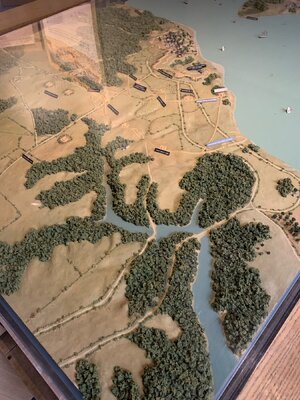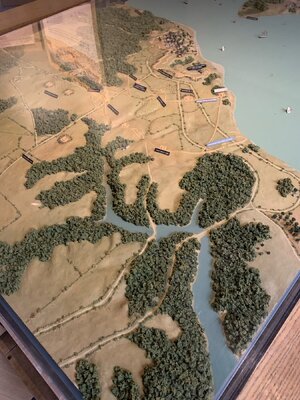Hi,
I'm planning to build a diorama of the Yorktown Battle of the American Revolution. I'm doing it for educational purposes, so I want the students to see the whole layout of the battle. My table will be about 3' x 4'. I have never built a diorama before. I've been looking at lots of videos and websites about building dioramas, just not sure how to figure out what the scale would be, and if there are diorama pieces at that scale I could buy (like houses, troop formations, cannon, etc.) to add detail to the landscape. Anyone have experience building dioramas of this scale? It would look something like this:

Thanks,
Kramer
I'm planning to build a diorama of the Yorktown Battle of the American Revolution. I'm doing it for educational purposes, so I want the students to see the whole layout of the battle. My table will be about 3' x 4'. I have never built a diorama before. I've been looking at lots of videos and websites about building dioramas, just not sure how to figure out what the scale would be, and if there are diorama pieces at that scale I could buy (like houses, troop formations, cannon, etc.) to add detail to the landscape. Anyone have experience building dioramas of this scale? It would look something like this:

Thanks,
Kramer








